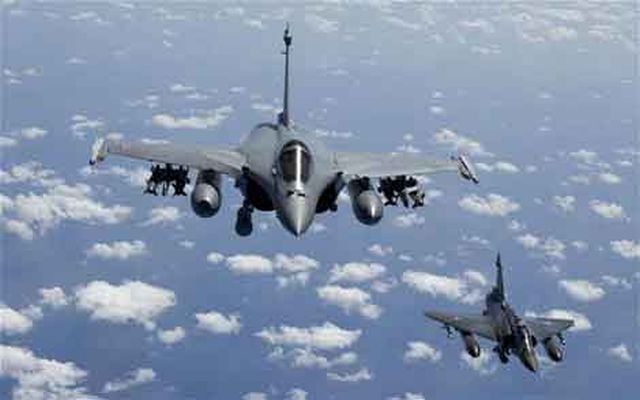
by admin | May 25, 2021 | Corporate, Corporate Governance, Economy, Finance, News, Politics
 New Delhi : The Comptroller and Auditor General (CAG) has found that the Rafale fighter jet deal signed by the National Democratic Alliance (NDA) government was 2.86 per cent lower than the price negotiated by the United Progressive Alliance government.
New Delhi : The Comptroller and Auditor General (CAG) has found that the Rafale fighter jet deal signed by the National Democratic Alliance (NDA) government was 2.86 per cent lower than the price negotiated by the United Progressive Alliance government.
The much-awaited report on Capital Acquisition on Indian Air Force was tabled by the government in Rajya Sabha on Wednesday.
The report does not disclose the actual price of the 36 Rafale fighter jets contracted by the NDA government. However, it includes examination of the pricing.
The prices have been redacted in the report based on the insistence of the Defence Ministry citing the Indo-French agreement of 2008 and the provisions of inter-government agreement.
—IANS
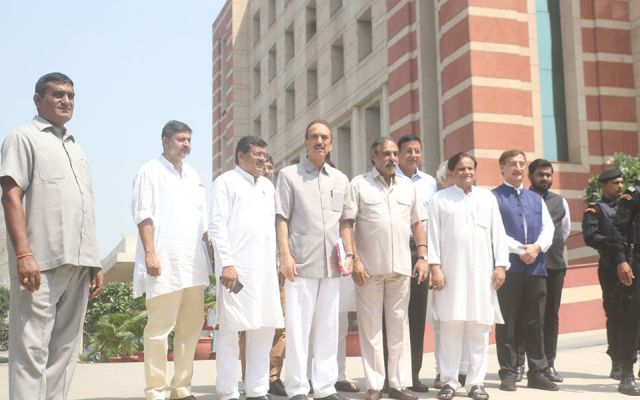
by admin | May 25, 2021 | Corporate, Corporate Governance, News, Politics
 New Delhi : A Congress delegation on Wednesday met the Comptroller and Auditor General to seek a probe into the purchase of 36 Rafale fighter jets by the Narendra Modi government.
New Delhi : A Congress delegation on Wednesday met the Comptroller and Auditor General to seek a probe into the purchase of 36 Rafale fighter jets by the Narendra Modi government.
The delegation consisting of senior party leaders A.K. Antony, Ahmed Patel, Ghulam Nabi Azad, Anand Sharma, Mukul Vasnik, Jairam Ramesh, Randeep Surjewala, Rajeev Shukla and Vivek Tankha reached the CAG office around 11 a.m.
According to the party, the delegation would also submit a memorandum seeking the probe.
The party has already held a series of press conferences on the issue, raising several questions on the deal done by the Modi government with France to purchase the fighter jets.
The government has, however, denied all the allegations.
The move is seen as an effort by the party to raise the pitch over the issue ahead of the Assembly polls later this year and the parliamentary elections in 2019.
—IANS
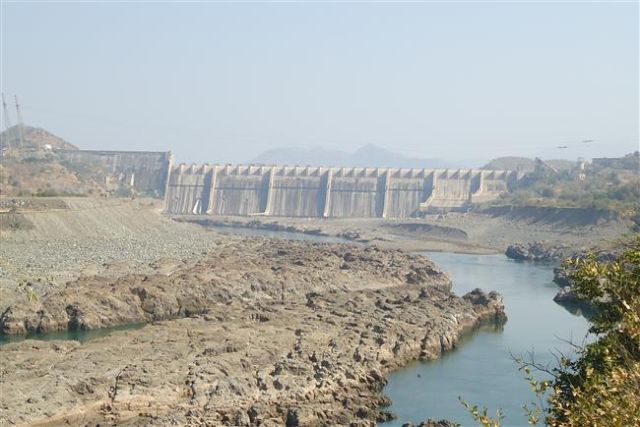
by admin | May 25, 2021 | Corporate, Corporate Governance

Teesta Barrage
By Arun Kumar Das,
New Delhi : Teesta Barrage, Indira Sagar Poolavaram and Gosikhand irigation projects are among five major water projects having strategic national importance that are way behind the completion mark, despite incurring expenditure over Rs 13,000 crore since 2008, according to the Comptroller and Auditor General of India.
Taking note of the cost escalation due to delays, the national auditor has observed that original cost estimate of the five projects was Rs 3530 cr while the current cost estimate is Rs 86,172 cr.
Coming down heavily on Ministry of Water Resources, River Development and Ganga Rejuvenation, the CAG in its latest report observed that the poor implementation of the important projects was adversely impacting strategic national interests and not been able to reach a stage where the benefits of power generation, drinking water and reservoir creation can be delivered.
The five national water projects which are nowhere near the completion due to various reasons including poor contract management and administrative delays are Indira Sagar Polavaram project in Andhra Pradesh, Gosikhand irrigation project in Maharashtra, Shahipur Kandi dam in Punjab, Saryu Nahar Pariyojna in Uttar Pradesh and Teesta Barrage in West Bengal.
The primary objective of national projects is to enhance agricultural productivity by creating irrigation potential and water availability in covered areas.
CAG noted that the shortfall in terms of physical progress in different components of the projects ranged from eight to 99 per cent in the five projects under implementation along with an overall cost escalation of 2,341 per cent that threatened the economic viability of the projects.
In February 2008, the Centre approved a scheme of national projects whereunder it identified 16 major water resource development and irrigation projects that were under the Accelerated Irrigation Benefits Programme (AIBP) but were languishing due to various constraints and hurdles including land acquisition, inter-State coordination, financial constraints and issues relating to rehabilitation and re-settlement of affected population.
The audit covered the period from April 2008 to March 2017 and examined the records and documents at Minister of Water Resources, River Development and Ganga Rejuvenation and the Central Water Commission (CWC) as well as in the States of Maharashtra, Punjab, West Bengal, Uttar Pradesh and Andhra Pradesh. The audit also visited selected sites for joint inspection to arrive at conclusions.
The poor implementation of the schemes was adversely impacting strategic national interests, CAG stated in the report tabled in Parliament.
Fundamental objective of the scheme was to ensure coordinated and focused action to expedite their execution and ensure their early completion. A performance audit of the scheme brought out that this fundamental objective remained unachieved though an expenditure of Rs 13,299.12 crore had been incurred on the five projects as of March 2017.
Out of the 16 national projects, only five projects with estimated Irrigation Potential of 25.10 lakh hectare were under implementation. In these five projects, 14.53 lakh hectare irrigation potential has been created but a mere 5.36 lakh hectare (37 per cent) irrigation potential is being utilised.
CAG has observed that the remaining 11 projects with estimated irrigation potential of 10.48 lakh hectare are yet to commence and are at different stages of approval.
The cost escalation in the five projects before their inclusion in the scheme was Rs 32,802 crore. However, since their inclusion as National Projects, two projects — Indira Sagar Polavaram and Gosikhurd, had alone registered an escalation of Rs 49,840 crore over the previous escalation.
Remaining three projects have already overshot their approved completion time and none of them is near completion.
CAG has pointed that the tardy implementation and cost escalation was attributable to management failures and deficiencies in terms of non-adherence to codal provisions relating to survey and investigations that are essential ingredients for preparation of 3 detailed project reports, ensuring statutory clearances for the project sites and administrative delays in land acquisitions.
This was compounded by inefficient Rehabilitation and Resettlement measures that further hindered progress of the projects.
Deviation from codal provisions and tender/agreement terms provided no assurance as to the transparency and objectivity of the process of selection of contractors, award of works and their execution.
In none of the five projects under implementation had any proposal for Command Area Development works been sent to Central Water Commission for approval.
CAG has also pointed out that the lack of adequate and effective monitoring and timely action to deal with breaches and damages to created infrastructure both contributed to the poor progress of works as well as inadequate maintenance of assets already created.
In view of their national importance, CAG has recommended that these projects may be taken up in a mission mode with nodal officers at the central level to effectively monitor the progress of the projects under implementation and remove bottlenecks in coordination with the State authorities.
(Arun Kumar Das can be contacted at akdas2005@gmail.com)
—IANS
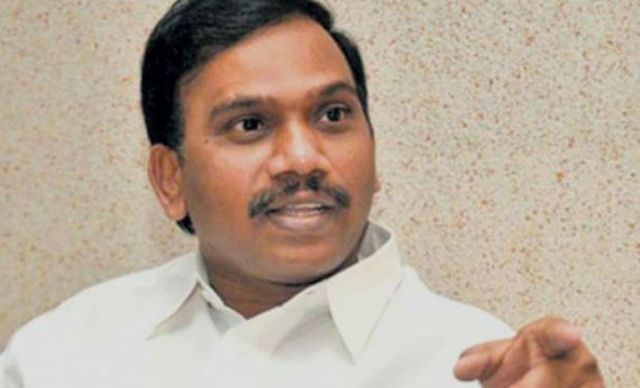
by admin | May 25, 2021 | News, Politics

Former minister A. Raja
By Sarwar Kashani,
New Delhi : Former Telecom Minister A. Raja, acquitted in the so-called 2G scam case, contends that the sanctity of the Comptroller and Auditor General’s (CAG) office was “severely compromised” by Vinod Rai who clearly had “ulterior motives” in over-reaching the bounds of his constitutional function while auditing accounts relating to the 2G spectrum allocation in 2010.
“He (Rai) had to foist his personal (or influenced) agenda by sensationalising information and creating the appearance of procedural lapses and financial misappropriation. His presumptive loss figure of Rs 1.76 lakh crore has been subsequently debunked, but it became engraved in public memory and led to my tribulations,” says Raja in his book “2G Saga Unfolds” (Har-Anand Publications).
The book, completed much before the judgment of the CBI court in December and set for release on Saturday, details the decisions Raja took on spectrum allocation and how he had followed rules and kept everybody, including then Prime Minister Manmohan Singh, in the loop.
He says he was pained when a two-judge bench of the Supreme Court cancelled the 122 2G licences granted by the United Progressive Alliance (UPA) government in 2007 on the basis of false narratives and media sensationalism.
He also has a grouse over the “silence” of Manmohan Singh and then cabinet colleague P. Chidambaram in defending his “wholly justified” actions when institutions like the Central Vigilance Comission (CVC), the Central Bureau of Investigation (CBI), the Joint Parliamentary Committee (JPC) and the Supreme Court were “refusing” to hear his defence.
“I never asked for any clemency from the courts in the criminal case that was filed against me, but I am disturbed by the manner of implementation of the rule of law,” he says in the preface to the 222-page book, completed on May 10, 2017.
He said he tried to establish, right from the issuance of 2G licences, that arrows of suspicion and false propaganda were fired at him with statutory and constitutional bodies concerned “setting off from a position of misinformation and remaining steeped in incomprehension”.
“…CAG Vinod Rai, while appearing well-intentioned, has executed the functions of his office with ulterior motives and lack of objectivity.”
The former minister, who had to quit the UPA II following the CAG report, refers to Rai’s book “Nation’s Conscience Keeper”, in which he wrote a few chapters on 2G allocation, and says as the government auditor, he was the “sutradar who created the devious apparition which the media and political opposition followed”.
“It is unfortunate that even the highest court of the country became a prey to this.”
In fact, he says that during the trial, he wanted to call Rai as witness but the CBI took the stand that it didn’t take the CAG report as the basis of its investigation.
“Whatever it is, they cannot cover up the fact that the CBI chargesheet contains only the ‘irregularities’ pointed by the CAG in its report. Clearly, Rai, whose statements would not have stood the test of cross examination in the court, was being protected by the CBI from being called as a witness.”
In the chapter on his resignation, he writes that the government’s intention became quite clear when the 2G case was divided into two parts — “making one as their shield and the other as a sword — for the CBI to wield against me”.
Raja writes about how he was in favour of a JPC to probe the allegations but Chidambaram was opposed to this.
“Chidambaram’s stand on 2G case is still a puzzle to me. He is an administrator of strong acumen, an able lawyer and a seasoned politician, yet I was surprised to see him shying away from discussing the 2G situation with me and even avoided speaking to me when we happened to pass each other at an airport.
“The only grouse that I have is that he did not support the idea of JPC and as a result the Supreme Court bench had — what I can best describe as — an emotional outburst against me and the government. He need not have done anything to protect or support me but he could certainly have helped a good government from being subjected to ignominy and its image being tarnished.”
Raja says he heard from his cabinet colleagues from the Congress that Chidambaram was of the view that there might be a “big scam” and hence his arrest was temporarily essential to steer the wrath of the Supreme Court and to avoid criticism against the Prime Minister.
“This is hearsay and is possibly untrue gossip. However, Chidambaram’s silence and his avoiding me put me on caution about what might be coming down the road. I sensed that a decision to put me behind the bars had been taken to salvage the government’s image. I was preparing myself both mentally and physically for jail life — I became vegetarian and started exercising twice daily.”
In the last chapter on closing arguments, Raja says that it was his contention that the “sanctity of the CAG was severely compromised by its then head Vinod Rai.
“Vinod Rai clearly had ulterior motives in over-reaching the bounds of his constitutional function.
“It is my conviction consequent to the whole experience of the trial that there was political motivation to kill UPA II and Rai’s was the shoulder on which the gun was placed. It is indeed sad that in spite of having so many intelligence agencies and eminent legal minds at its disposal, the UPA II government couldn’t sense this and only tried to use me as a shield but were still unable to escape the bullet.
“The UPA government’s and even more so Manmohan Singh’s palpable silence in relation to defending my wholly justified actions, especially when the governing bodies (CVC, CBI, JPC and the Supreme Court) were refusing to hear my defence, felt like silencing of our nation’s collective conscience.
“My sense of victimisation was compounded by the fact that for the first time in history an individual (Raja) was thus hounded by various institutions (constitutional bodies) with the full force of their bureaucratic machinery,” Raja writes.
(Sarwar Kashani can be contacted at s.kashani@ians.in)
—IANS
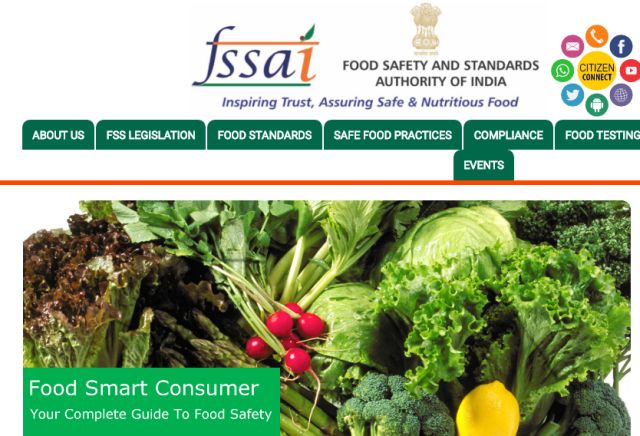
by admin | May 25, 2021 | Opinions

(Website screen shot)
By Amit Kapoor,
In the same week as a Delhi court acquitted all the accused in the 2G fiasco, the Comptroller and Auditor General of India (CAG), which had a defining role to play in the case, tabled yet another report slamming Indias apex food regulatory body.
According to the CAG’s observations, the Food Safety and Standards Authority of India (FSSAI) is guilty of various lapses in enforcing food safety across the country. It claimed that food articles that were declared unsafe by it remain up for sale in markets due to lack of adequate monitoring. Moreover, most of the laboratories across states do not have proper accreditation. So, the quality of their testing cannot be ensured.
At the outset, it is important to point out that food safety is an important issue to sustain a nation’s growth in the long run. Unsafe food imposes substantial direct and indirect costs. Apart from adding an avoidable strain on the country’s healthcare systems, poor food safety standards beget diseases that adversely impact the productivity of the labour force and, thus, the overall competitiveness of a nation.
Moreover, most of the burden is borne by the population at the bottom of the pyramid as they are usually more price- than quality-sensitive. Therefore, a strong food regulator becomes an absolute necessity for a nation’s sustained and balanced development.
Keeping these factors in mind, FSSAI was established in 2006 under the Food Safety and Standards Act. It was an important step which consolidated all the food safety legislation spread across different ministries under one head and marked a paradigm shift in food policy from a narrow focus on adulteration to a more holistic approach on the provision of safe and wholesome food. This implied a shift from the mere testing of the final food product for adulteration to implementing mechanisms that prevent the communication of pathogens across the supply chain. The latter approach ensured safety from “farm to plate”.
However, by picking holes in the agency’s functioning, the CAG audit takes a narrow view on the matter. Even though it has been a decade since the enactment of the food law as the report points out, implementation has always been a challenge for FSSAI due to lack of resources. After the legislation was passed, resources from the earlier regime were reshaped to fit in with the new policy. Moreover, there were legacy issues. Each state has its own unique system of food regulation which failed to evolve with the new policy. Insufficient manpower and funding impeded the process further.
FSSAI has taken active steps to remedy these issues. One, realising how it will be impractical for the food regulator to micromanage safety standards on a national scale, it is aiming to enforce a system of self-regulation. Towards this end, the agency finalised third-party auditors of food businesses and mandated the units to have at least one trained food safety expert.
Another proposed mechanism is for food companies to voluntarily participate in the Responsible Food Company Index that will measure and monitor the workings of food businesses beyond statutory compliance. Successful implementation of these processes will ensure an efficient market-based mechanism of self-assessment in food safety.
Second, to address the issue with food laboratories, FSSAI is bringing them under the Indian Food Laboratory Network (InFoLNet), a digitally centralised management system that will connect all food labs across India. All the tests and results will be available on the platform for greater transparency and reduction in information asymmetry between consumers and food businesses. It is also in the process of setting up more NABL (National Accreditation Board for Testing and Calibration Laboratories) — accredited food labs across states beyond the two that it owns and operates.
Finally, and most importantly, the agency is about to roll out a “one-nation, one-food-safety law” regime so that every state-level authority follows a common standard of practice for implementation, compliance and enforcement of food safety regulations. It is standardising the procedures around inspections done at the state level. Food safety experts will now have to follow a set of centrally-prescribed standards. This will eliminate any discrepancies across states and streamline the process of surveillance, sampling and inspection.
The states need to play their part in complementing the efforts of FSSAI to ensure food safety. A central body cannot ensure implementation across the country unless states take it upon themselves to drive the required changes at the micro level. It will also be in their best interests to follow up on FSSAI regulations. Ensuring provision of safe and wholesome food for citizens should be looked upon as an investment into increasing the productivity of the workforce that will later reap economic dividends for the state itself.
(Amit Kapoor is chair, Institute for Competitiveness, India. The views expressed are personal. He can be contacted at amit.kapoor@competitiveness.in and tweets @kautiliya. Chirag Yadav, researcher at Institute for Competitiveness has contributed to the article)
—IANS

 New Delhi : The Comptroller and Auditor General (CAG) has found that the Rafale fighter jet deal signed by the National Democratic Alliance (NDA) government was 2.86 per cent lower than the price negotiated by the United Progressive Alliance government.
New Delhi : The Comptroller and Auditor General (CAG) has found that the Rafale fighter jet deal signed by the National Democratic Alliance (NDA) government was 2.86 per cent lower than the price negotiated by the United Progressive Alliance government.



